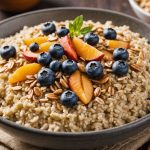Overview of High-Intensity Interval Training and Heart Health
High-Intensity Interval Training (HIIT) has gained popularity as a dynamic workout approach. It involves alternating short bursts of intense exercise with periods of rest or low-intensity activity. This method uniquely benefits cardiovascular health by enhancing the efficiency with which the heart, lungs, and muscles function together.
Cardiovascular health is critical for overall well-being. It ensures adequate blood flow, supplying oxygen and nutrients while aiding in waste removal from the body. Optimal cardiovascular health minimizes risks related to heart diseases, strokes, and hypertension, emphasizing the significant link between physical conditioning and heart health.
Topic to read : Discover the Best Fish Varieties for Fighting Inflammation Naturally
What role does exercise intensity play in heart performance? Higher intensity exercises, characteristic of HIIT, challenge the cardiovascular system more effectively than moderate activities. This increased demand prompts the heart to pump more vigorously, ultimately boosting its strength and endurance.
Moreover, HIIT’s structured nature provides:
Have you seen this : Discover the Best Footwear to Safeguard Against Jogging Injuries
- Improved heart rate variability, reflecting a healthy heart.
- Enhanced oxygen uptake, crucial for stamina and performance.
- Efficient calorie burning, promoting fat loss and muscle preservation.
Thus, integrating HIIT into a fitness regime can substantially elevate one’s cardiovascular performance, leading to overall heart health benefits.
Benefits of HIIT for Cardiovascular Wellness
High-Intensity Interval Training (HIIT) has gained recognition for its exceptional benefits on heart health. Research has shown that HIIT significantly contributes to improved cardiovascular function. Unlike traditional steady-state cardio, which requires longer durations to achieve results, HIIT engages the heart in more efficient, shorter bursts.
Scientific Support
Multiple scientific studies underscore HIIT’s efficacy in enhancing cardiovascular health. For instance, research indicates that HIIT can dramatically lower blood pressure, offering a substantial reduction in hypertension risks. Furthermore, HIIT effectively boosts good cholesterol levels (HDL) while lowering bad cholesterol (LDL), positively impacting overall heart wellness.
Comparison with Traditional Cardio
Comparatively, while steady-state cardio remains beneficial, HIIT provides more rapid heart health improvements. It achieves equivalent, if not superior, results in less time, making it an ideal choice for individuals with tight schedules.
Specific Heart Health Improvements
Engaging in regular HIIT workouts can lead to specific cardiovascular benefits, including decreased arterial stiffness and enhanced blood vessel function. These changes collectively reduce heart strain, decreasing the likelihood of heart attacks. Emphasising the efficiency of HIIT can thus empower individuals to incorporate it into their fitness regime for substantiated heart health benefits.
Practical Tips for Incorporating HIIT into Your Routine
Incorporating HIIT Workouts into your fitness routine can be both effective and enjoyable. With the right approach, you can maximise the benefits of high-intensity interval training.
Structuring Your HIIT Sessions
When structuring your HIIT sessions, consider the duration and frequency. Aim for sessions that last between 15 to 30 minutes, performed 2 to 3 times a week. This allows for adequate recovery and prevents burnout. Opt for exercises like jumping jacks, burpees, and mountain climbers, which are suitable for HIIT and effectively raise your heart rate. Always start with a warm-up phase to prevent injuries and end with a cool-down to aid recovery.
Modifications for Various Fitness Levels
Tailor HIIT workouts for beginners by reducing intensity and incorporating more rest. Beginners might start with shorter active phases. Intermediate and advanced users can increase intensity by shortening rest periods and adding complex movements. Provisions for older adults or individuals with pre-existing conditions involve low-impact exercises like walking or cycling. Always prioritise safety and listen to your body’s signals to avoid overexertion.
Safety Precautions and Potential Risks of HIIT
High-Intensity Interval Training (HIIT) offers incredible fitness benefits, but understanding HIIT safety is crucial. Common risks associated with this form of exercise include overexertion injuries, such as strains, sprains, and joint issues due to intense and repetitive movements. Without proper guidance, the risk of cardiovascular complications may be elevated, especially for those with underlying health conditions.
To mitigate these exercise risks, a pre-exercise screening for health concerns is paramount. Health assessments can identify potential issues, enabling tailored workouts that suit individual fitness levels and medical needs. Consulting a healthcare professional before starting a HIIT regimen can significantly reduce the possibility of injuries.
During and after HIIT sessions, it is vital to monitor specific signs that might indicate excessive strain or health issues. These include prolonged shortness of breath, dizziness, unusual fatigue, or chest pain. Ignoring such symptoms can escalate minor issues to severe health risks. Being proactive about safety and attentive to the body’s signals can allow for a safer and more beneficial HIIT experience.
Incorporating these health precautions ensures that the exhilarating benefits of HIIT do not come at the expense of your well-being. Always prioritize safety for long-term, enjoyable fitness.
Comparisons to Other Cardiovascular Exercises
When exploring different cardiovascular exercises, it is vital to understand the distinctions between High-Intensity Interval Training (HIIT) and other workout forms. HIIT focuses on short bursts of intense activity followed by periods of rest or low activity, making it efficient for burning calories in a shorter time. In contrast, steady-state exercises, such as jogging or cycling, involve maintaining a consistent effort level over a more extended period. This often results in improved endurance and cardiovascular health.
Exercise comparisons reveal that HIIT can be just as effective, if not more so, in boosting cardiovascular health and aiding weight loss compared to steady-state workouts. However, the choice between HIIT vs steady-state should be influenced by personal goals and physical condition. While HIIT might be preferable for those seeking rapid improvements in fitness or calorie burn, steady-state exercises can offer a lower-impact option for sustained activity.
Cross-training with complementary exercises can also provide a balanced workout regime, enhancing flexibility and strength while preventing boredom. Thus, when deciding on exercise types, consider factors like desired intensity, time availability, and long-term fitness objectives to tailor an effective routine.
Demographic-Specific Benefits of HIIT
High-Intensity Interval Training (HIIT) is tailored to yield advantages across various fitness demographics, offering unique benefits to different age groups and target populations. For younger adults, HIIT is a popular choice as it capitalises on their energy levels and capacity for recovery, delivering quick results in stamina and muscle development. The fast-paced nature of HIIT fits their busy schedules, making it a feasible fitness option.
For middle-aged and older populations, HIIT presents specific benefits such as improved cardiovascular health and increased metabolism. It can aid in reducing cholesterol levels and managing blood pressure efficiently without the time commitment of traditional workouts. The adaptability of HIIT ensures exercises can be performed at individual intensity levels, accommodating the physical capabilities of older participants.
Unique considerations arise for individuals with specific health conditions like diabetes and obesity. HIIT may aid in regulating blood sugar levels while enhancing insulin sensitivity, proving beneficial for those managing diabetes. For those with obesity, HIIT encourages calorie burning and boosts metabolism, facilitating weight loss. However, it is crucial to modify the intensity and duration according to the individual’s health status, ensuring safety and effectiveness.
Testimonials and Success Stories
High-Intensity Interval Training (HIIT) success stories abound, showcasing its profound impact on heart health and overall well-being. Many individuals turn to HIIT after exploring other fitness avenues, drawn by its efficiency and dynamic workouts. A myriad of real-life experiences reveals how HIIT has helped people lower their blood pressure, increase cardiovascular endurance, and boost their energy levels.
Real-life Accounts from Individuals
Take Sarah, a 45-year-old mother of two, who was concerned about her heart health after years of a sedentary lifestyle. By incorporating HIIT into her routine, she noticed significant improvements in her stamina and heart rate, demonstrating the transformative power of such workouts.
Impact of Community and Support
The importance of community support in these fitness testimonials cannot be understated. Many participants find motivation in HIIT classes, where trainers and fellow enthusiasts foster a sense of camaraderie, pushing individuals to achieve their fitness goals. This shared journey amplifies their dedication, leading to heightened success stories.
Diverse Demographics Engaging in HIIT
Inspirational case studies further highlight that HIIT has no boundaries. From young adults in college to retirees striving for active lifestyles, the adaptability of HIIT workouts ensures people from all walks of life can experience its benefits, paving the way for widespread health improvement.











